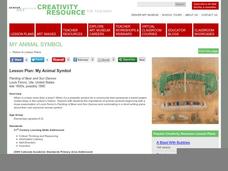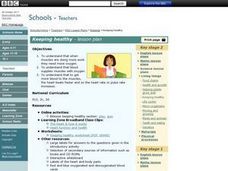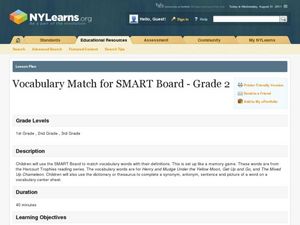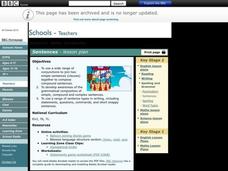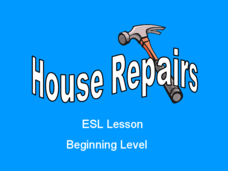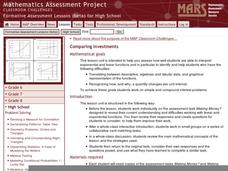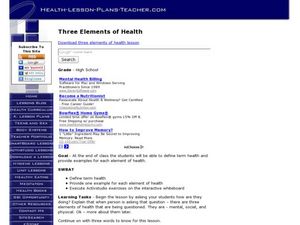ARKive
Biodiversity and Evolution – Darwin’s Finches
Teens experience natural selection firsthand (or first beak) in an activity that has them act as finches foraging for food. Using different household items to act as different beak styles, your little finches will collect as much food...
Curated OER
Percentages: Fractions and Decimals
Second graders convert fractions to percentages. In this interactive whiteboard percentages lesson, 2nd graders problem solve using percentages, fractions, and decimals.
Denver Art Museum
My Animal Symbol
Here is an art lesson plan that combines visual arts and language arts into one very nice package. In it, youngsters study a fascinating painting called Painting of Bear and Sun Dances. They begin to understand the importance of...
Curated OER
Keeping Healthy Lesson Plan
Students explore how muscles work. In this health lesson, students identify how the blood supplies muscles with oxygen. Students participate in an online activity to reinforce the concepts.
Curated OER
The Number System
Learners explore how to multiply and divide by 10, 100, and 1000. In this computation lesson, students participate in an online activity using the interactive whiteboard. Learners generate sums by using dice.
Curated OER
Shadow Play
Learners investigate shadows. In this shadows and technology lesson, students listen to the book Ten Grouchy Groundhogs or Gretchen Groundhog, It's Your Day! and discuss how shadows are made. Learners match objects to their shadow...
Curated OER
Dividing by 3's
Third graders review and practice strategies for solving division problems. In this division by 3's lesson, 3rd graders play games, use an interactive whiteboard, create flashcards, and solve word problems.
Curated OER
Vocabulary Match for SMARTBoard
Second graders practice vocabulary using the interactive whiteboard. For this vocabulary match lesson, 2nd graders review vocabulary words, take turns revealing a word or definition, and then identify the match. Students utilize a...
Curated OER
Sorting and Using Materials
Students explore materials and their properties. In this matter instructional activity, students identify objects and describe their properties. Students test and sort materials using an interactive whiteboard, followed by a group...
Curated OER
Sentences
Students create different types of sentences. In this sentence writing lesson, students use various types of sentences to make writing interesting. Students play online games and use the interactive whiteboard to practice.
SP Controls
Doceri
Take off those chains binding you to the whiteboard and create custom presentations using an interactive program that makes even voice recording a breeze. Choose from a variety of backgrounds, writing tools, and timing options. Perfect...
Curated OER
House Repairs: ESL Lesson, Beginning Level
Explore the world of home repair using this ESL presentation. With terms like construction worker, painter, and electrician, the vivid and clear illustrations on each slide will help your beginning ESL learners identify various...
Curated OER
Morning Activities: ESL Lesson, Beginning Level
What do you typically do in the morning? Phrases like wake up in the morning, take a shower, eat breakfast, and put on your shoes make up this ESL presentation, which works as a good bridge between vocabulary words and forming longer...
Curated OER
Bedrooms: Beginning ESL Lesson
"Lullaby, and good night..." Using this presentation, you can help English learners identify the basic items in their bedrooms. Blankets, cribs, nightgowns, and closets are all featured in these slides, along with cute pictures and brief...
Alabama Learning Exchange
Solving Formulas for the Given Variable
Recycle, reuse, and rearrange! Young scholars learn to rearrange formulas to highlight a variable of interest. They then use their new formulas to make calculations.
Scholastic
I Survived Being Bullied
Listen, or read, to a first-hand account of how 15-year old Adama survived being bullied. Scholars gain insight into Adama's experience while reinforcing reading comprehension and vocabulary skills using context clues.
Curated OER
Comparing Investments
Money, money, money. A complete lesson that makes use of different representations of simple and compound interest, including written scenarios, tables, graphs, and equations to highlight similarities and differences between linear and...
Scholastic
Selecting Favorite Poems From Historical Poets
Here is a poetry lesson that begins with a free-association activity focused on the word voice. Learners each sit alone for a moment and make sounds that express how they are currently feeling, and then turn to their partners to share...
Scholastic
Writing Letters to the Chancellors of the Academy of American Poets
To celebrate National Poetry Month, young writers focus on the role letter writing has played in the development of poets. They begin by journaling three to five associations to a writing prompt that requires them to identify their...
Curated OER
Three Elements of Health
High schoolers identify and discuss three important elements of health: physical, social, and mental health. They go into detail about each and spend a lot of time discussing the dangers of smoking, drinking alcohol, and eating a...
Utah Education Network (UEN)
The Angle Tangle
Fourth and fifth graders identify three types of angles, recognize that angles are measured in degrees, measure angles using protractors or angle rulers. They classify angles as a class, classify angles on pattern blocks, and complete a...
Curated OER
Food Chains
Students investigate how food chains work. In this food chains lesson, students construct a food web for a pear tree habitat. The interactive whiteboard is an optional tool in this lesson.
Curated OER
Classroom Identity
Students explore fingerprints. In this finger prints lesson, students investigate how to classify fingerprints. Students study large pictures of fingerprints and circle the patterns they know how to identify. Students then take their own...
Curated OER
Magnets and Springs
Students explore magnetic attraction. In this magnets lesson, students participate in an interactive whiteboard activity in which objects are dragged onto a virtual table and categorized as to whether they are "repelled" or "attracted"...




